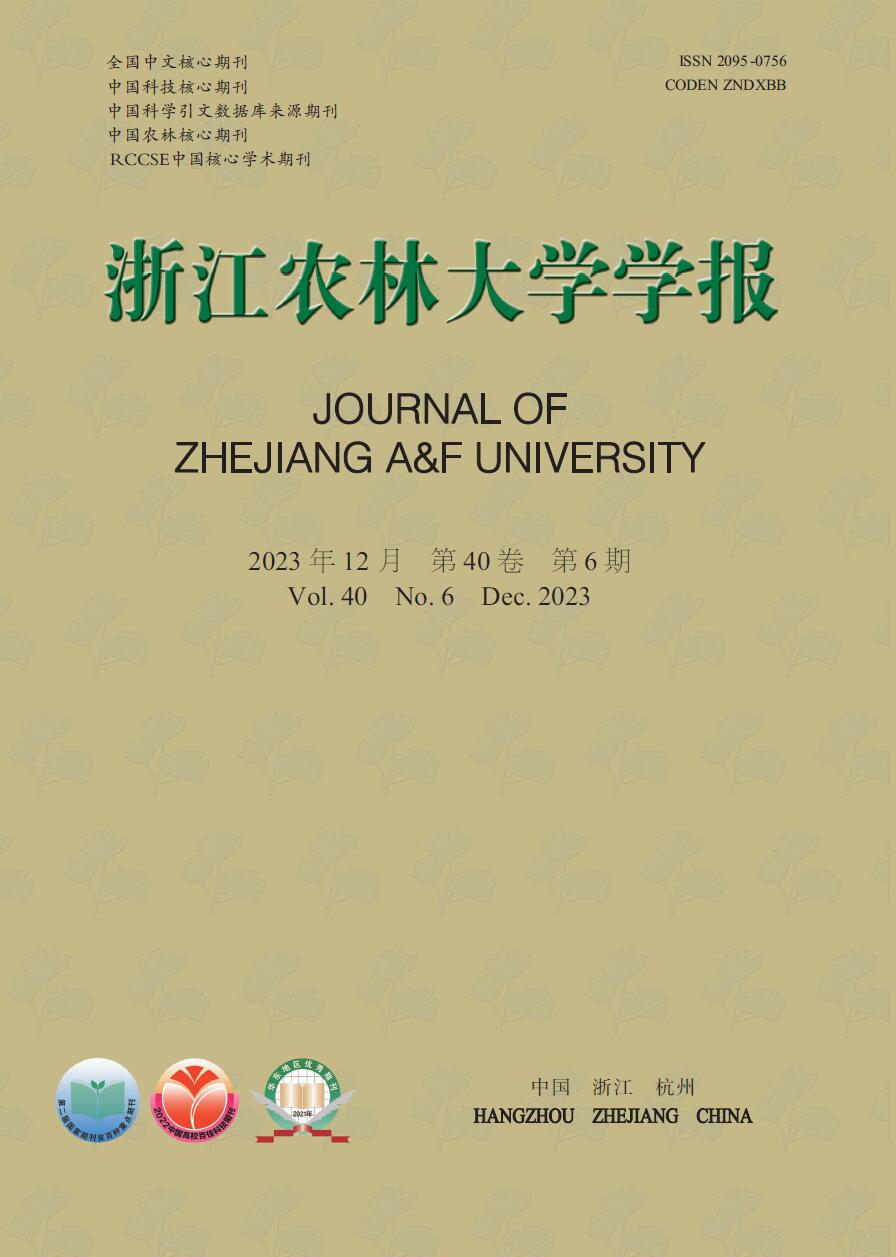-
全球气候变化是人类目前面临的最为严峻的挑战,威胁着人类的生存和发展。自工业化时期以来,由于人口大幅增加和经济快速增长,造成了大量人为温室气体排放,成为全球气候变暖的主要诱因。世界气象组织(WMO)最新数据显示,2020年大气二氧化碳(CO2)质量分数高达410 mg·kg−1,比工业革命前增长60%。联合国政府间气候变化专门委员会(IPCC)第6次评估报告指出:从未来20 a的平均气温变化来看,全球升温预计将达1.5 ℃。目前,应对气候变化已成为全球共识,减少温室气体排放是缓解全球气候变暖的有效途径[1]。在此背景下,中国政府在2020年第75届联合国大会上向世界承诺,力争于2030年前实现CO2排放达到峰值,努力争取2060年前实现碳中和。碳达峰碳中和(“双碳”)是一场广泛而深刻的经济社会系统性变革,碳达峰碳中和目标纳入中国生态文明建设整体布局,上升为国家战略。种植业是实现碳达峰碳中和目标的重要领域之一。与其他行业不同,种植业既是重要的温室气体排放源,又有着巨大的固碳增汇潜力,推进种植业领域减排增汇将在实现碳达峰碳中和目标进程中发挥举足轻重的作用[2−3]。本研究针对种植业碳达峰碳中和目标的实现途径进行梳理总结,并提出进一步的见解,从而为种植业助力国家实现碳达峰碳中和目标提供理论支撑和科学建议。
-
种植业生态系统不仅是碳源同时也是碳汇。一方面,种植业生产活动会导致包括CO2、氧化亚氮(N2O)和甲烷(CH4)在内的温室气体排放,这部分温室气体约占全球碳排放总量的25%[4−5]。另一方面,种植业中的农田、森林和草地等生态系统通过光合作用进行生物固碳,每年固碳量能抵消全球30%的人为碳排放量[6−7]。可见种植业减排增汇是应对全球气候变暖,实现碳达峰碳中和目标不可或缺的重要组成部分。
-
种植业是非二氧化碳温室气体(N2O和CH4)的主要排放源,在100 a时间尺度上,N2O和CH4的全球增温潜势分别是CO2的298和34倍[8]。全球人为温室气体排放量在过去几十年显著增加,其中种植业N2O排放占全球人为N2O排放总量的60%以上[9],种植业CH4排放贡献了全球人为CH4排放量的10%左右[10]。
N2O是硝化和反硝化作用的主要产物。硝化作用是指还原态氮[铵离子(NH4 +)、氨气(NH3)和有机氮(RNH2)]在微生物作用下变为氧化态氮[硝酸根(NO3 −)和亚硝酸根(NO2 −)]的过程。N2O是还原态氮在硝化微生物作用下被氧化为氧化态氮过程中产生的副产物。通常情况下,反硝化作用是指在厌氧条件下,NO3 −或NO2 −被硝化微生物还原为一氧化氮(NO)和N2O,然后进一步被还原为氮气(N2)的过程。反硝化过程是将自然界的活性氮转变为惰性氮的过程,因此反硝化过程对维持大气氮素平衡具有很重要的意义。农田土壤是最大的N2O排放源。过量施用氮肥造成土壤N2O排放增加,是导致大气N2O质量分数上升的主要因素。由于过量施用氮肥导致的土壤N2O排放量约为3.3 Tg·a−1,占全球人为N2O排放总量的65%[8]。同时,土壤N2O排放受土壤水分状况的影响,淹水稻田在中期烤田期会强烈刺激N2O的排放。近年来,随着全球水资源短缺以及节水灌溉措施的快速发展,节水灌溉稻田成为农业N2O新的排放源[11−12]。此外,农作物秸秆不完全焚烧也会产生N2O,但数量极少。
CH4主要在厌氧环境条件下产生,它的种植业排放源主要包括:一是长期处于淹水条件下的稻田,土壤中的产甲烷菌利用有机物料(如根系分泌物、动植物残体以及有机肥等)产生CH4,进而排放到大气中[13−14]。稻田CH4排放量受到土壤水肥管理措施以及土壤有机质的影响。在一定范围内,稻田淹水高度越大,土壤中有机质越多,CH4排放量越大。二是作物秸秆不完全焚烧也会产生CH4。
除了上述直接排放,种植业生产过程中还会有大量的间接碳排放。农作物种植过程中使用的农机、农药、化肥和农膜等农业投入品在制造过程中也会排放大量温室气体[15−16]。有研究报道:农用柴油、农药、化肥和农膜等农业生产资料引起的间接排放占中国农业温室气体排放总量的34%[17]。根据《中国农村统计年鉴》,1990年以来,中国农用柴油、农药、化肥和农膜等的投入量分别上升了115%、131%、137%和440%,由此导致农业间接温室气体排放量以年均2%的速度增长[18]。
-
种植业碳汇主要指农田土壤碳汇。土壤碳库是地球陆地生态系统中最大的碳库,其碳储量约为陆地植被碳库或大气碳库的2~4倍[19]。土壤具体是如何固碳的呢?土壤固定的碳最初都来源于大气。首先,植物通过光合作用将大气中CO2转化为有机物质,然后有机物质内的碳通过根系分泌物、死亡的根系以及枝叶凋落物进入土壤,并在土壤微生物的作用下,转化为土壤有机质储存于土壤中,形成土壤碳库。简单来说,土壤可以通过植物来吸收、转化、储存大气中的CO2。《第二次气候变化国家评估报告》指出:中国土壤碳库碳储量约为103 Pg。土壤碳库的微弱变化都有可能引起大气CO2浓度的巨大变化,从而影响全球气候变化。目前,中国农业发展水平较低,农田土壤固碳增汇潜力巨大。中国总耕地面积大约为1.3 亿hm2,土壤碳库尤其是主要农业区表层土壤有机碳质量分数较低。根据《2019年全国耕地质量等级情况公报》,全国耕地质量平均等级为4.76等,中低等级耕地占2/3以上,耕作层变浅、土壤退化以及耕地质量普遍较低是中国农业耕地的现状。全国耕地平均有机碳质量分数低于世界平均值30%以上,低于欧美等发达国家和地区50%以上[20]。美国著名土壤学家LAL[21]研究发现:美国土壤每年固碳潜力为7.5~20.8 Gg,中国农田土壤固碳潜力为22.0~37.0 Tg。在所有的碳中和负碳技术中,土壤固碳被公认为是成本最低、最具有潜力、最易实现和操作的,能有效冲抵能源、交通、工业等领域的碳排放。因此,只要技术合理,农田土壤固碳增汇潜力巨大,是实现中国碳达峰碳中和目标的重要支撑。
-
农田土壤N2O减排可采用减少氮肥施用、优化施肥模式、使用新型肥料(如全元生物有机肥、生物质炭基肥)和抑制剂(如缓控释肥、硝化抑制剂)、提高水肥耦合等措施,在增加作物产量的同时,有效减少N2O排放,提高氮肥利用效率,降低肥料投入成本,实现增产与减排协同。李玥等[22]指出:合理施氮是农田土壤N2O减排的关键,并提出“4R”的施肥理念,即正确的施肥量、正确的肥料类型与配比、正确的施肥时间和正确的施肥方法。尽管有机肥施用存在增加土壤N2O排放的风险[23],但在合理施氮情况下利用有机肥部分替代化学氮肥既可以提高土壤肥力,改善土壤性状,又可以通过减少土壤氮底物有效性而降低农田土壤N2O排放[24−25]。生物质炭基肥是将生物质炭与氮磷钾肥按照特定比例混合后造粒包膜制成,可以替代普通化肥施用,同时增施了有机质。大田试验研究表明:生物质炭基肥替代化学肥料可有效减少农田N2O排放17%~64%[26],部分试验结果还显示可减少稻田CH4排放[27−28]。硝化抑制剂可以通过降低硝化速率实现农田土壤N2O减排。目前市面上常见的硝化抑制剂有3,4-二甲基磷酸盐(DMPP)、双氰胺(DCD)和四氮本啶(nitrapyin)等。施用硝化抑制剂可降低38%的农田土壤N2O排放,但不同地区土壤和硝化抑制剂种类的减排效果存在显著差异[29]。研究表明:施用硝化抑制剂可分别降低旱作农田和稻田N2O排放46%和32%[30−31]。为了农田N2O减排,在考虑肥料施用的同时也要关注土壤水分状况,不同水分条件对土壤N2O排放影响较大。李金秋等[32]通过田间试验发现:施肥和水分管理均显著影响双季稻田N2O排放,常规灌溉和尿素施用增加稻田N2O排放,而常规灌溉管理和有机肥配施化肥模式,既能保证水稻产量,又能实现减氮和减排效果,是当地值得参考的水肥管理模式。因此,今后的农田N2O减排也要综合考虑多方面因素,制定和开展减排措施。
-
稻田CH4减排可采用中期排水烤田、控制灌溉以及湿润灌溉等节水灌溉水分管理措施来实现[33−35]。节水灌溉在减少稻田CH4排放的同时,可能会刺激土壤N2O排放。作物秸秆还田和有机肥施用可减少土壤N2O排放,但外源有机物质的添加会加剧CH4排放。因此,只有将优化施肥模式与节水灌溉措施相结合,才有可能减少稻田综合温室气体排放。就水旱轮作农田生态系统而言,如水稻Oryza sativa-小麦Triticum aestivum轮作、水稻-油菜Brassica napus轮作,可采取在旱作生长季施用有机肥或秸秆还田,既可以提高土壤碳库储量,又可以避免有机物质的添加造成的稻田CH4排放[36]。有研究表明:施用CH4抑制剂、生物质炭或生物质炭基肥等新型肥料,可作为降低稻田CH4排放的有效手段,是种植业固碳减排协同技术的发展新方向[37−38]。同时,还可利用先进的作物遗传育种手段,选育推广高产、优质、低碳水稻品种,降低水稻单产CH4排放强度。
-
针对种植业生产造成的间接碳排放,实施化石能源消耗减量措施,主要包括对种植业生产中机械设备进行更新改造,加快老旧农机报废更新力度,推广先进适用的低碳节能农机装备,推广新能源技术,优化农机装备结构,加快绿色、智能、复式、高效农机化技术装备普及应用,降低化石能源消耗和CO2排放[39−40]。以粮食和重要农产品生产所需农机为重点,推进节能减排。实施更为严格的农机排放标准,减少废气排放。因地制宜发展复式、高效农机装备和电动农机装备,培育壮大新型农机服务组织,提供高效便捷的农机作业服务,减少种子、化肥、农药、水资源用量,提升作业效率,降低能源消耗。加快侧深施肥、精准施药、节水灌溉、高性能免耕播种等机械装备推广应用,大力示范推广节种、节水、节能、节肥、节药的农机化技术。实施农机报废更新补贴政策,加大能耗高、排放高、损失大、安全性能低的老旧农机淘汰力度。
-
一方面,施用有机肥可以促进作物根系发育,在微生物的作用下能固定更多的CO2,且土壤团聚体稳定性显著增强,可以减少土壤中碳的损失。另一方面,有机肥施用可以提高土壤有机质质量分数。土壤有机质既有易被微生物利用的不稳定态,又包括与土壤健康密切相关的稳定态的可以长期储存碳的腐殖质。有机肥的类型、用量、配施等都会影响土壤固碳效果[41]。研究表明:长期施用有机肥可显著提高双季稻田碳汇效应与经济效益,绿肥紫云英Astragalus sinicus与猪粪和秸秆配施,稻田生态系统碳汇效益与经济效益较单施绿肥紫云英优势更明显。有机肥和无机肥配施可以增加土壤有机碳的积累。有机农业生态系统土壤有机碳比常规生态系统高20%,在前15 a土壤碳存储速率最高。秸秆还田是通过秸秆粉碎抛撒、机械还田,配套应用调氮促腐技术,将碳保留在土壤中,增加土壤有机质,减少化肥施用量,具有减肥增产、固碳、降污多重效果[42]。
-
保护性耕作是对农田采用少耕、免耕或地表微型改造,结合覆盖、轮作、农药病虫害防除等措施,确保耕地可持续利用的综合性土壤管理技术体系。保护性耕作可以减少对土壤的扰动,降低土壤侵蚀,促进蓄水保墒,提高表层土壤有机碳质量分数,增强土壤固碳增汇能力[43]。相比自然植被,农业种植导致土壤有机碳显著降低,农田表层土壤的有机碳储量较草地和林地土壤分别降低45%和52%,这是由于农业耕作显著加速了不稳定颗粒有机质的周转,减少了稳定有机碳组分的形成,从而导致土壤有机碳库储量明显下降[44]。另外,土壤翻耕会破坏土壤团聚体结构、加速有机质分解,风和水的侵蚀增强,导致暴露和侵蚀的土壤中的碳以温室气体的形式排放到大气中。犁耕的碳排放量是免耕的14倍,即使采用保护性耕作机具,碳损失量也达到免耕的4倍[45]。因此,从常规深耕转向少耕或免耕可改善土壤结构、减少碳排放,增加土壤有机碳储量。在秸秆还田的基础上,免耕可显著提高表层土壤有机碳质量分数。
-
中国种植业废弃物资源化利用仍处于起步阶段,农作物秸秆资源化利用是种植业废弃物资源化工作的重大挑战。目前,中国种植业废弃物常见的利用方式主要包括农作物秸秆还田和好氧堆肥还田。这些利用方式虽然可以小幅度增加土壤碳库,但是其生产或应用环节同样会造成大量温室气体排放[46]。因此,种植业废弃物的利用应基于种植业增汇和减排双重考虑。与秸秆直接还田和好氧堆肥等方式相比,废弃物热解炭化既充分保留了废弃物中的有机质和各种养分,又实现废弃物的多元、清洁和安全利用。热解炭化的主要产物生物炭质是一种富含稳定有机质和矿质养分的多组分固体炭质,具有稳定、疏松多孔且环境友好的特点[47]。利用不同性质的种植业废弃物热解炭化,可充分挖掘其养分、炭质和结构的优势,创造清洁高效、安全卫生和功能丰富的炭基产品。种植业废弃物热解炭化后还田,可以将作物光合作用固定的碳返还并长期保存于土壤,补充土壤有机碳和养分的同时能有效改善土壤结构,平衡土壤酸碱度,提升土壤缓冲性和保肥蓄水能力,为土壤固碳增汇和种植业绿色发展提供了新路径[37]。2017年,秸秆炭化还田被列入国家十大秸秆处理模式之一。2020—2021年,秸秆炭化还田入围农业农村部重大引领性技术榜单。
-
实现种植业碳中和不仅需要上述传统的技术创新途径,还需要依靠新兴的经济金融手段——碳标签与碳交易。在全球绿色低碳发展的环境和经济背景下,世界农业也已进入可持续发展的低碳农业经济时代,碳标签、碳足迹和碳交易这些新兴概念应运而生。碳足迹是产品在整个生命周期内的温室气体排放总量,一般用CO2当量形式表达[48]。将碳足迹展现于产品标签之上,即碳标签。碳标签既是碳足迹的延伸也是碳足迹的载体。碳标签的主要作用是呈现产品或服务对全球变化影响的信息,把产品或服务从生产到消耗整个生命周期过程中的碳足迹在产品标签上用量化的数值标示出来。消费者可通过产品碳标签了解产品整个生命周期中的碳排放信息,引导消费者选购更加低碳绿色的产品和服务,促使企业采用各种减排措施减少碳排放,从而促进低碳社会的发展[49]。碳标签制度将自下而上地推动中国碳减排工作由强制到自愿的转变。这一新工具的产生运作必然推动中国向低碳经济发展。产品碳足迹计算是农产品碳标签制度推行的关键,作为企业应适应国际规则,积极发展低碳经济;作为消费者应培养低碳意识,养成环境友好型消费习惯;作为政府应积极扶持,助力企业产品向低碳化和标签化发展。目前应结合国家碳中和战略目标,加快推进特色农产品碳标签制度进程,促进低碳种植业的发展,助推种植业碳中和。
碳交易以可持续发展为核心,以配额交易及核证自愿减排量(CCER)交易为主要内容,充分利用市场经济对绿色发展所发挥的重要作用,不同类型企业根据自身碳排放情况对规定的碳排放配额进行配置,或用于自身发展需要,或用于市场交易,最终形成宏观和微观相结合的有重点、多层次碳排放交易格局。现阶段,中国碳交易机制具有全国交易系统与试点地区交易所相结合、行业要求与排量要求相结合、排放配额与自愿减排量相结合等特点。中国碳交易市场已有长足发展,但目前种植业碳交易特别是农田土壤碳汇交易尚处于起步阶段。在实现种植业碳中和战略目标的过程中,碳交易是不可或缺的一部分。应积极推动形成政府主导、社会参与、市场化运作的种植业碳交易体系,在保障国家粮食安全与重要农产品有效供给的同时,降低碳排放、增加碳汇,并使农民在碳排放交易中的得到更多红利,最终形成与资源环境承载力相匹配,与生产生活生态相协调的种植业低碳发展新格局。
-
实施种植业碳达峰碳中和要以全面推进乡村振兴、加快农业农村现代化为引领,以绿色低碳科技创新为支撑,以降低温室气体排放强度、提高农田土壤固碳增汇能力、实施农业废弃物资源化利用为抓手,全面提升农业综合生产能力,建立完善监测评估体系,完善政策保障机制,加快形成资源节约型和环境友好型的农业产业结构、生产方式和空间格局。
第一,追求种植业碳达峰碳中和战略目标必须以保障粮食安全为前提。中国是人口大国,粮食安全具有重大意义,所以必须充分认识到种植业减排增汇必须以保障国家粮食安全和重要农产品有效供给为前提,科学确定减排增汇途径,合理设定碳排放峰值。种植业领域的特殊性要求不能舍弃粮食产量去偏面追求种植业减排增汇。在稳步推进田间减排的同时,要努力挖掘种植业生产过程中节能减排的潜力,大力推广先进环保节能新农具,通过提高种植业生产环节的智能化、精准化水平,降低农业投入品的使用量,从而降低能源消耗。
第二,重点围绕农作物秸秆资源化利用,加快推进种植业废弃物热解炭化还田。全球气候变化背景下中国种植业面临耕地质量与农产品安全的巨大挑战,数十亿吨的种植业废弃物处置与资源化利用任务艰巨。在应对气候变化挑战时,应充分挖掘种植业废弃物资源,政府提供技术和资金扶持,发展以热解炭化为基础的生物质技术与产业,满足国家绿色可持续农业发展与种植业减排增汇需求。未来需要积极开发创新热解炭化装备、炭基肥料、炭基材料等技术方法,推动炭基集成技术与产业模式的大规模推广,提高种植业生产者的参与积极性,不断释放种植业助力碳中和的潜力。
第三,加快技术创新,加强创新能力保障。在国家碳达峰碳中和的战略目标背景下,需要更大力度的技术创新。支持部分基础条件好、特色鲜明的综合性高校和行业高校,先行建设一批碳达峰碳中和领域新学院、新学科和新专业,鼓励自然科学与社会科学的交叉融合研究,培养碳达峰碳中和战略复合型人才。推动高校参与或组建碳达峰碳中和相关的国家重点实验室和国家技术创新中心,引导高等学校建设一批高水平国家科研平台。鼓励高校实施碳中和交叉学科人才培养专项计划,大力支持跨学院、跨学科组建科研和人才培养团队,以大团队、大项目支撑高质量本科生和研究生多层次培养。鼓励高校加强碳达峰碳中和领域高素质师资队伍建设。加大碳达峰碳中和领域课程、教材等教学资源建设力度。同时出台针对农业碳达峰碳中和的法律法规,制定相应的技术标准,组织和建立研究机构和研究平台,投入资金和科研力量,加快技术创新,研发颠覆性技术,探索区域化的整体解决方案。
第四,充分发挥政策驱动作用,加快建设种植业碳交易市场,充分挖掘种植业减排增汇的经济价值,着力提升市场内生动力。目前,种植业碳金融市场建设缓慢,与工业行业日趋成熟的碳排放核算方法相比,低碳种植业领域仍缺乏具有权威性、一致性、可操作性的碳排放核算方法。通过构建完善种植业碳标签评估标准和种植业碳排放核算方法,强化种植业碳补贴等方式,加强对种植业碳减排的政策引导,推动数字科技在金融支持种植业碳减排领域中的创新应用。在推进种植业碳交易市场扩大的过程中,政府应做好统一碳市场的顶层设计,以防止不良竞争,保证政策的可执行性及有效性;构建种植业低碳发展政策体系,制定低碳种植业发展的正负面清单,探索种植业生态产品价值实现机制,优化、创设包括法律法规、规范标准、生态补偿、监测预警、财政税收、金融信贷等多种类型政策工具,为中国种植业低碳发展提供长效规制、约束与激励。
Approaches and policy recommendations for reducing emissions and increasing carbon sinks in crop industry under the background of carbon peak and carbon neutrality
doi: 10.11833/j.issn.2095-0756.20220742
- Received Date: 2022-12-01
- Accepted Date: 2023-08-30
- Rev Recd Date: 2023-08-24
- Available Online: 2023-11-23
- Publish Date: 2023-11-23
-
Key words:
- climate change /
- carbon neutrality /
- carbon peak /
- greenhouse gas reduction /
- carbon sequestration and sink enhancement /
- carbon label
Abstract: Carbon peak and carbon neutrality (dual carbon) is a broad and profound systemic change that requires the participation of various industry sectors. Unlike other industries, crop industry is not only an important source of greenhouse gas emissions, but also has enormous potential for carbon sequestration. Promoting emission reduction and carbon sequestration in crop industry is an indispensable part of achieving national dual carbon. In this paper, the main emission sources of nitrous oxide (N2O) and methane (CH4) in the field of planting were sorted out, including N2O emissions caused by excessive nitrogen application, water-saving irrigation of rice fields, and livestock and poultry waste, as well as CH4 emissions from flooded rice fields and ruminant animals. In addition to the direct emissions mentioned above, there existed a significant amount of indirect carbon emissions during agricultural production processes. The greenhouse gas emission reduction and carbon sequestration potential of crop industry were analyzed and the main emission reduction and sequestration pathways were summarized, including N2O emission reduction in dryland, CH4 emission reduction in rice fields. The potential of carbon sequestration and sink enhancement in crop industry could be increased through the application of organic fertilizer, straw return to the field, conservation tillage and return of farming waste to the field through pyrolysis and charring. This paper also discusses the feasibility and importance of carbon labeling and carbon trading in promoting green and low carbon development in China’s crop industry. It is clarified that emission reduction and soil carbon sink increase in crop industry must be based on the premise of safeguarding food security, avoiding blind emission reduction and excessive emission reduction, and must be coordinated with green development of crop industry. A sound guarantee and innovation system should be established to provide assistance for China’s carbon peak and carbon neutrality. [Ch, 49 ref.]
| Citation: | KONG Delei, JIANG Peikun. Approaches and policy recommendations for reducing emissions and increasing carbon sinks in crop industry under the background of carbon peak and carbon neutrality[J]. Journal of Zhejiang A&F University, 2023, 40(6): 1357-1365. DOI: 10.11833/j.issn.2095-0756.20220742 |









 DownLoad:
DownLoad: